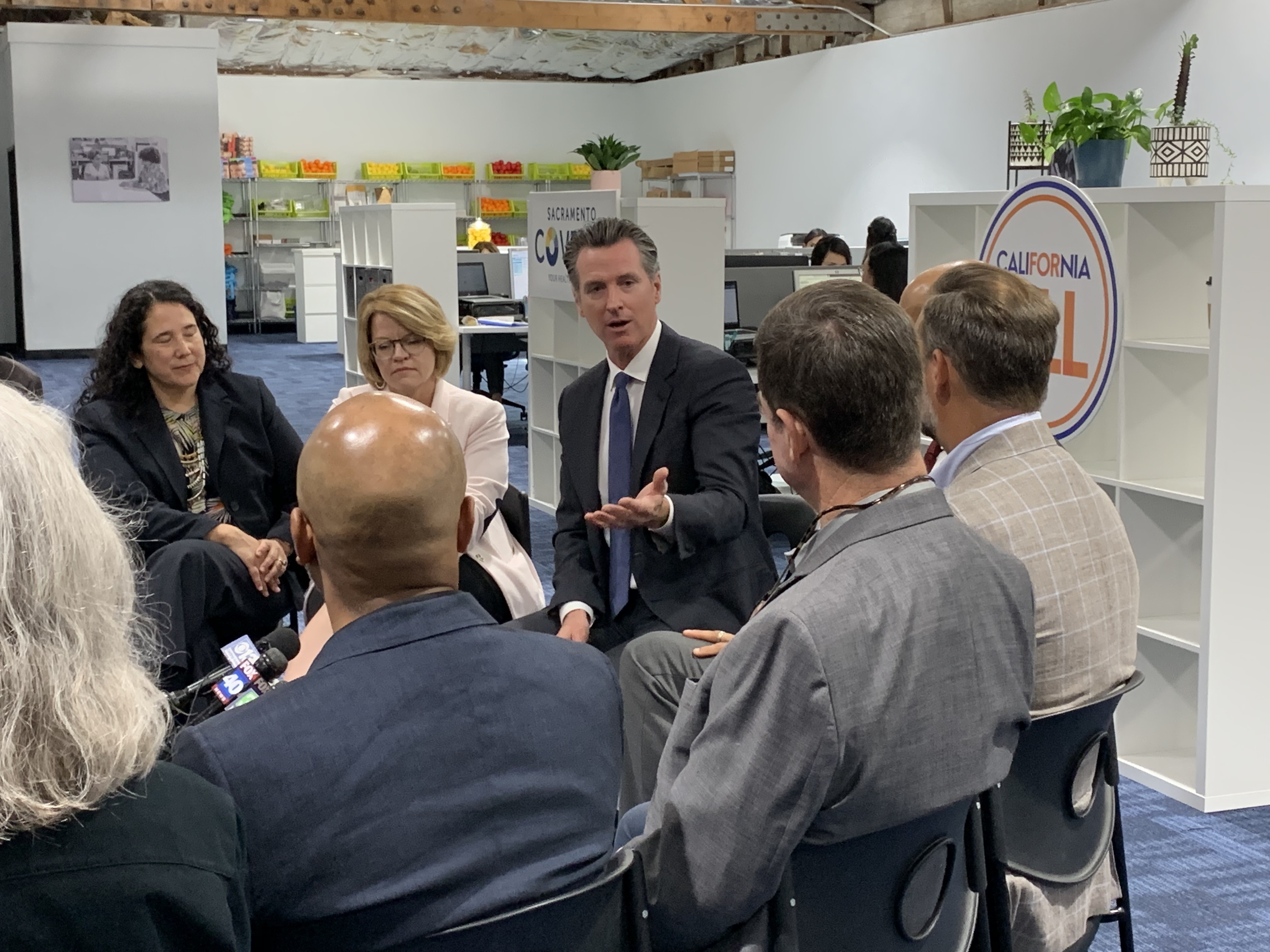The first phase of modifying COVID-19 stay-at-home orders will involve testing, tracking and tracing, according to Gov. Gavin Newsom.
“We are aiming to loosen stay at home orders but there is no date,” the governor told journalists in a telephonic press conference. “If we set a date, we are denying the reality on the ground. The spread of the virus is dynamic.”
As of April 22, there were 35,396 positive cases and 1,354 deaths in California, according to the Department of Health.
Flanked by Secretary of the Health and Human Services Agency Dr. Mark Ghaly, Gov. Newsom said ramping up coronavirus testing will help the state preserve public health and public safety so that people can go to work and shop at the grocery store, for example.
“We need to make it easy for people to get the test as we modify the stay at home order,” Dr. Ghaly said.
Currently, there are 16,000 swab tests being administered daily and the goal by the end of April is 25,000 tests per day.
“Testing doesn’t mean much without protocols of track and trace,” said Gov Newsom.
“We have the capacity to build an army of tracers with a beginning goal of 10,000 tracers. We want all Californians tested in every part of the state, including rural parts of the state and the black and brown communities in our urban centers.”
Contact track and trace is an epidemiology term, which involves reviewing the contacts a COVID-19 positive person may have had and isolating those individuals to mitigate the spread of the virus, according to Marko Mijic, deputy secretary of program and fiscal affairs with the Health and Human Services Agency.
“It's the traditional containment strategy that we started early on in this process,” said Mijic who presented the strategy last week to the Senate’s Special Subcommittee on COVID-19 Response. “In order for us to modify stay at home orders as the governor has alluded to, we really have to creatively think about that.”
Sen. Richard Pan (D-Sacramento), however, expressed some concern at the virtual hearing about potential delays to track and trace testing.
“If we're talking about leveraging technology, there's probably going to be some issues around privacy and civil rights people may bring up depending on what and how we plan to use technology,” said Sen. Pan, who is also a physician. “That's going to take some time to work out so I hope we get ahead of that and not wait too long to start engaging in those discussions.”
At Tuesday’s press conference, Gov. Newsome said 86 new coronavirus testing sites will become operational in partnership with Google and other tech companies however Dr. Ghaly said a significant amount of PPE would be needed to move forward with any plan to modify the state’s stay at home order in order to move forward safely.
“When someone tests positive, we want to identify those who have been in close contact with that person,” Dr. Ghaly said. “We will contact them, check symptoms, recommend testing and encourage isolation, which will enable us to suppress the spread of the virus.”
The governor added that the state is developing guidelines for isolating and supporting people during those times of isolation.
“I spoke with 300 members of the philanthropic community on how to support communities with an undue burden of isolation and quarantine,” he said. “If we are demanding quarantine, there are resource issues that have to be addressed. We don’t want to take the parachute off before we land, which is why we are expanding capacity in the hospitals.”
Before testing can continue, however, the state needs to replenish its supply of swabs. Some 251 sites have reported a need for more swabs. The governor said he appealed to President Donald Trump on Tuesday about an hour before his daily press briefing.
“The president has secured and given me the confidence that we will receive a minimum of 90,000 swabs, which will be forthcoming this week,” Gov. Newsom said. “The president said he will be providing 260,000 next week and the third week more than 250,000 swabs. He is willing to commit to us in California a substantial increase in swabs so that we can meet some of these testing goals.”
The governor and state officials are also looking to eventually transition from swab testing to serology tests.
“We are learning more about serology and, as it develops, we will be one of the first to adapt and scale it to determine how many people in our community have been infected,” said Dr. Ghaly. "We are focusing on prevalence in communities. That will be the role of those tests across the state.”
